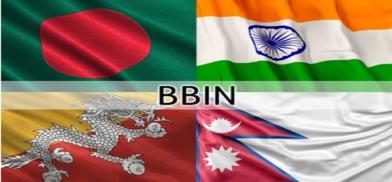EU's growing engagement in South Asia will benefit India, Bangladesh, Nepal, and Bhutan
In order to provide small company owners and women traders access to the market, South Asian countries should also adopt regional concepts like the border "haat" (informal markets) used at the India-Bangladesh and India-Myanmar border points.

India and the EU are hosting the Global Gateway Conference in Shillong, Meghalaya from June 1-2, 2023. The two-day event brings together Bhutan, Bangladesh, and Nepal with the Northeast of India in an effort to boost commerce and economic growth in the region.
India's Ministry of External Affairs stated that the conference would "explore possibilities of boosting connectivity investments in India's North-Eastern States and with India's neighbors." The three pillars of the connectivity initiative—improving digital, energy, and transportation links—seek to identify initiatives for joint implementation.
Utilizing the Bangladesh-Bhutan-India-Nepal (BBIN) project, connectivity issues in South Asia are being addressed in an effort to establish a smooth flow of people and cargo traffic. The two-day meeting will motivate India to take action on these issues. Connectivity between the four nations is expected to lead to regional economic integration and greater people-to-people exchanges, which have been constrained by tensions among the South Asian Association for Regional Cooperation (SAARC) governments.
The India-EU Connectivity Partnership was formally established at the May 2021 India-EU Leaders' Meeting, which was attended by Prime Minister Narendra Modi, 27 EU Member States, the President of the European Council, and the European Commission. The ambitious "connectivity partnership" wants to increase connectivity in the fields of technology, energy, transportation, and interpersonal communication. It also takes into account supporting the connectivity aspirations of the Indo-Pacific region.
The connectivity agreement between the EU and India aims to strengthen sustainable digital, transportation, and energy networks in addition to promoting the mobility of people, goods, services, data, and capital. Investing prospects in the sectors of clean and renewable energy, health and education, and transportation connectivity, which includes roads, bridges, and railroads, will also be discussed at the Meghalaya conference.
Global Gateway Strategy
The EU's Global Gateway Strategy, which was presented in December 2021, draws on the priorities of the Paris Agreement and the UN Sustainable Development Goals (SDGs), in addition to connecting to its Indo-Pacific plan and specific connectivity partnerships with Japan and India. Along with the benefits of creating an Indo-Pacific framework, India will find the lessons learned from an integrated EU helpful in uniting South Asia.
As the world gears up for a post-Covid 19 phase, there is an increasing need for regional economic cooperation and integration among South Asian countries, particularly the BBIN sub-region. South Asia is one of the least integrated regions in the world, which has a significant negative impact on the economies of countries like Bangladesh and India.
Although the BBIN project is revolutionary, it must be realized in a certain time frame. India's infrastructure initiative is crucial as China constructs a multi-billion dollar Belt and Road Initiative (BRI), boosting its economic and military might.
South Asia must be regarded holistically if it is to reach its full growth potential. Due to their geostrategic location, countries like Bangladesh and Nepal have a rare opportunity to participate in numerous regional projects.
To further social and economic development among these South Asian countries, sub-regional cooperation like Bangladesh, Bhutan, India, and Nepal Motor Vehicles Agreement (BBIN MVA) is crucial for increasing connectivity.
BBIN motor vehicle agreement
After SAARC failed to reach a consensus on a regional motor vehicle accord at the Kathmandu Summit in 2014, in part due to Pakistan's resistance, the BBIN MVA connectivity project was proposed. The BBIN MVA's objective is to construct a road-based economic corridor connecting Bangladesh, Bhutan, India, and Nepal.
Bhutan has pushed the other three nations to ratify the agreement even though it has not done so itself due to environmental concerns. The BBIN MVA aims to promote the unrestricted movement of people, goods, and vehicles within and between the BBIN nations. With only 5 per cent of the total trade in the region, South Asia has some of the lowest intraregional trade rates in the entire world. There are major hurdles to clear before implementing massive connection schemes like the BBIN MVA. Typically, traders have more than 10 separate authorities where they must clear their papers.
Because there aren't enough accredited laboratories to approve export products, shipments routinely arrive weeks late. The prolonged border delays raise the already high trade costs among BBIN member nations. Infrastructure gaps, crowded borders, detouring transport routes, and inadequate roads directly impede the movement of products and services, increasing trade costs and transit times. Along with these challenges, it's crucial to consider developing intermodal transshipment facilities, modern warehouse space, infrastructure that is inclusive of all genders, and jobs associated to commerce and transit.
Improving road and rail connectivity between India, Bangladesh, and landlocked Nepal and Bhutan is essential to ensuring a smooth flow of goods and services. By reducing paperwork, enhancing risk management strategies to do away with physical inspections, facilitating cross-border movement, and upgrading sanitary and phytosanitary standards, business processes can be made more effective. India, Bangladesh, and Nepal can develop unified electronic gateways with assistance from the EU, allowing importers and exporters to online submit their documentation.
BBIN cross-border trade
The development of roads between integrated check stations and inland container depots will increase the efficiency of significant volumes of cross-border trade. In order to close infrastructure gaps, it is necessary to build and upgrade internal and transnational highways, extend multimodal transportation networks, including roads and rails, and modernize infrastructure, including integrated border crossings.
In order to provide small company owners and women traders access to the market, South Asian countries should also adopt regional concepts like the border "haat" (informal markets) used at the India-Bangladesh and India-Myanmar border points.
High-quality road infrastructure may have a high starting cost. The long-term advantages of funding such large projects, however, exceed the short-term expenses. Numerous studies in high-, middle-, and low-income countries show a positive relationship between the state of the transportation system and economic expansion.
Transportation infrastructure is therefore essential since it serves as the primary driver of economic growth. All stakeholders will be able to access substantial regional markets if they can build cutting-edge road and rail infrastructure.
By utilizing their economic corridors and concentrating on important industries, the BBIN countries should support the EU's engagement while also fostering intimate ties amongst their peoples to foster regional unity and integration.
EU involvement will spur growth
Bangladesh, Japan, and India assembled in Agartala, Tripura on April 11 and 12 to talk about connection initiatives that will aid the area in achieving its commercial potential. Japan is showing greater interest in this region. One can now see the EU's interest in the region following Japanese engagement. Additionally, significant pillars in the region are the connectivity partnerships with Japan (2020) and India (2021) and the Indo-Pacific plan of the European Union (EU). The magnitude, scope, and effect of Team Europe investments are intended to grow through Global Gateway. The EU's involvement with these nations is in its strategic and commercial interests. The EU is a significant participant in the Indo-Pacific strategy of the US and India.
Meetings between Nepal and Bangladesh are scheduled to discuss bilateral energy trade and Bangladeshi investment in Nepal's hydropower industry. Due to the bilateral power exchange, Nepal is able to buy electricity from Bangladesh in the winter and sell its monopoly during the rainier seasons.
In this sense, the Bangladesh-India-Nepal Partnership aims to improve the quality of highways, increase the availability and dependability of power, and enable cross-border electrical trade between India, Nepal, and Bangladesh. To improve the region's competitiveness and close development disparities, Northeast India, Nepal, Bhutan, and Bangladesh should improve their multimodal connectivity.
The Northeastern Region (NER) being connected to the Bay of Bengal and Bangladesh through the establishment of an industrial value chain by the EU may significantly alter the geopolitical environment of the area.
With the opening of the Padma Bridge, Bangladesh's northern and southern regions are now easily accessible, removing two significant structural barriers to the development of a cross-border value chain.
A deep-sea harbour is being constructed by the country at Matarbari in Cox's Bazar. Because Bangladesh and India are already building the necessary transportation infrastructure to connect Tripura and the NER to Chattogram Port, the EU's involvement is significant.
Through the involvement of the EU and bilateral power trade with Bangladesh, Nepal will have the opportunity to engage in power commerce with India and Bangladesh. India, Bhutan, Bangladesh, and Nepal all stand to benefit from stronger ties with the EU. The region has to move fast to complete high-priority connectivity projects since they will have major macroeconomic benefits and generate thousands of new employment.
(The author is a senior researcher at South Asian Geopolitics in Savitribai Phule Pune University, Pune, India. Views are personal. You can contact this person at ajantaacharyaphd@gmail.com)










Post a Comment